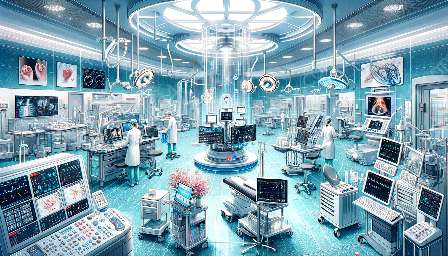Interoperability and standardization of medical devices and instrumentation in healthcare settings present significant challenges in ensuring seamless integration and effective operations. As technology continues to revolutionize the healthcare industry, the demand for interconnected, efficient, and standardized medical devices and instrumentation has become increasingly crucial. This article explores the complexities, obstacles, and potential solutions that are relevant to achieving interoperability and standardization within the context of biomedical instrumentation and medical devices.
Overview of Interoperability and Standardization
Interoperability refers to the ability of diverse information technology systems and software applications to communicate, exchange data, and use the information that has been exchanged. In the healthcare sector, interoperability is particularly critical when dealing with medical devices and instrumentation, as seamless communication and data exchange are essential for providing timely and accurate patient care.
Standardization, on the other hand, involves establishing uniform specifications, criteria, and processes to ensure compatibility and consistency in the design, manufacturing, and usage of medical devices and instrumentation. Standardization promotes interoperability by providing a common framework that enables different devices and systems to work together effectively.
Complexities and Challenges in Achieving Interoperability and Standardization
The complexity of achieving interoperability and standardization in healthcare settings is multifaceted, stemming from various technological, regulatory, and organizational factors.
Technological Heterogeneity
One of the primary challenges involves the technological heterogeneity of medical devices and instrumentation. These devices often utilize different communication protocols, data formats, and connectivity options, making it difficult to establish seamless interoperability among them. Additionally, the rapid evolution of technology results in the coexistence of legacy systems and cutting-edge innovations, further complicating the standardization efforts.
Regulatory Compliance
Regulatory frameworks and standards play a crucial role in ensuring the safety, performance, and interoperability of medical devices. However, navigating the complex landscape of regulatory requirements across different geographical regions and healthcare systems poses significant challenges. Compliance with diverse regulations often leads to discrepancies in standards and interoperability protocols, hindering seamless integration of medical devices.
Data Security and Privacy Concerns
With the proliferation of interconnected medical devices and instrumentation, data security and privacy concerns have become increasingly prominent. Establishing interoperability while maintaining robust security measures to protect sensitive patient information poses a considerable challenge. The need to adhere to stringent security protocols and encryption standards further complicates the standardization efforts.
Organizational Fragmentation
The fragmented nature of healthcare organizations and the diverse operational practices across different healthcare settings contribute to the challenges of achieving interoperability and standardization. Varying procurement processes, infrastructure limitations, and resistance to change within healthcare institutions hinder the seamless integration of medical devices and instrumentation.
Potential Solutions and Strategies
Addressing the challenges associated with interoperability and standardization of medical devices and instrumentation requires a multifaceted approach that encompasses technological innovations, regulatory harmonization, and collaborative initiatives.
Development of Unified Interoperability Standards
Efforts to develop and adopt standardized communication protocols, data exchange formats, and interoperability frameworks are vital in promoting seamless integration of medical devices. Stakeholders within the healthcare industry, including manufacturers, regulatory bodies, and healthcare providers, must collaborate to establish unified standards that facilitate interoperability and data compatibility.
Enhanced Regulatory Coordination
Harmonizing regulatory frameworks and interoperability standards across different jurisdictions is crucial in overcoming the impediments posed by divergent regulatory requirements. Coordinated efforts between regulatory authorities and industry stakeholders can streamline the compliance process and promote consistency in the design and functionality of medical devices, thereby facilitating interoperability.
Cybersecurity Integration and Privacy Protection
Integrating robust cybersecurity measures into the design and implementation of medical devices is imperative for ensuring data security and privacy. Standardization efforts should prioritize the adoption of encryption technologies, authentication protocols, and secure data transmission methods to mitigate cybersecurity risks. Additionally, adherence to privacy regulations such as the Health Insurance Portability and Accountability Act (HIPAA) is essential for safeguarding patient information.
Collaborative Ecosystem and Knowledge Sharing
Fostering a collaborative ecosystem that promotes knowledge sharing and best practices can expedite the standardization process. Industry consortia, research institutions, and healthcare providers should engage in collaborative endeavors to exchange insights, develop interoperable solutions, and address common challenges related to medical device integration.
Conclusion
The pursuit of interoperability and standardization in the realm of medical devices and instrumentation is intertwined with the broader mission of enhancing patient care, optimizing operational efficiency, and advancing healthcare outcomes. Despite the inherent complexities and obstacles, concerted efforts to establish interoperable and standardized medical devices are integral to driving innovation and progress in healthcare delivery. By acknowledging the challenges and embracing collaborative solutions, the healthcare industry can pave the way for a future where seamless interoperability and standardization further enhance the quality and efficacy of medical devices in healthcare settings.


